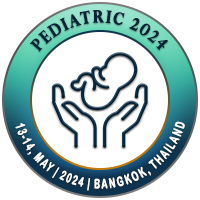
Linde Musters
The University of Adelaide, AustraliaTitle: Acceptable angulation for common pediatric forearm fractures
Abstract
Introduction: Forearm fractures represent 40 to 50 percent of all childhood fractures. These patients are commonly seen by the youngest residents with fewest experience. They rely on current guidelines on acceptable angulation. Commonly cited is the systematic review by Ploegmakers et al. 2006, which gave good suggestions on acceptable angulation for most common forearm fractures in children. But this review was bases on old literature. We wanted to do an updated search in literature and perform a current expert opinion questionnaire, to see if current thoughts by experts have changed and follow the current literature.
Method: A meta-analysis on acceptable angulation of most common forearm fractures in children. A search on Embase, Medline ALL, Web of Science Core Collection, Scopus, Cochrane Central Register of Controlled Trials, NICAHL EBSCOhost and Google scholar, last accessed at the 6th August 2023. Subject of interest was acceptable angulation of forearm fractures in children, with exclusion of Monteggia/ Galeazzi type of fractures.
Results: Updated search of 09/11/2021 gave 3650 articles, 1813 after removing duplicates, 471 when cross-referenced with Ploegmakers search. Due to the amount of time that passed a 2nd updated search has been performed on the 6/8/2023, which resulted in 3994 articles, 1986 after removing duplicates and 194 after cross-referencing with Ploegmakers. All articles have screened in duple (L.M. and K.R). Finally, 135 articles were included in the meta-analysis.
Conclusion: This meta-analysis on literature, shows that overall, more angulation can be accepted in younger patients and less for older patient groups. The expert opinion shows that clinicians are already accepting more angulation for younger patients and are being even more conservative than the literature for older patients. Concluding that current clinical acceptable angulation for common pediatric forearms is roughly following updated literature, which means more angulation can be accepted for younger children and less for older children.
In the future the same systematic review could be useful for clarifying acceptable angulation in pediatric lower extremity fractures.
Biography
Linde Musters is working as a fellow orthopedic surgery/ sarcoma/trauma at the Flinder Medical Centre. She has finished her specialty as Orthopedic Surgeon in 2022. She is in the finalizing faze of her PhD on pediatric forearm fractures.

